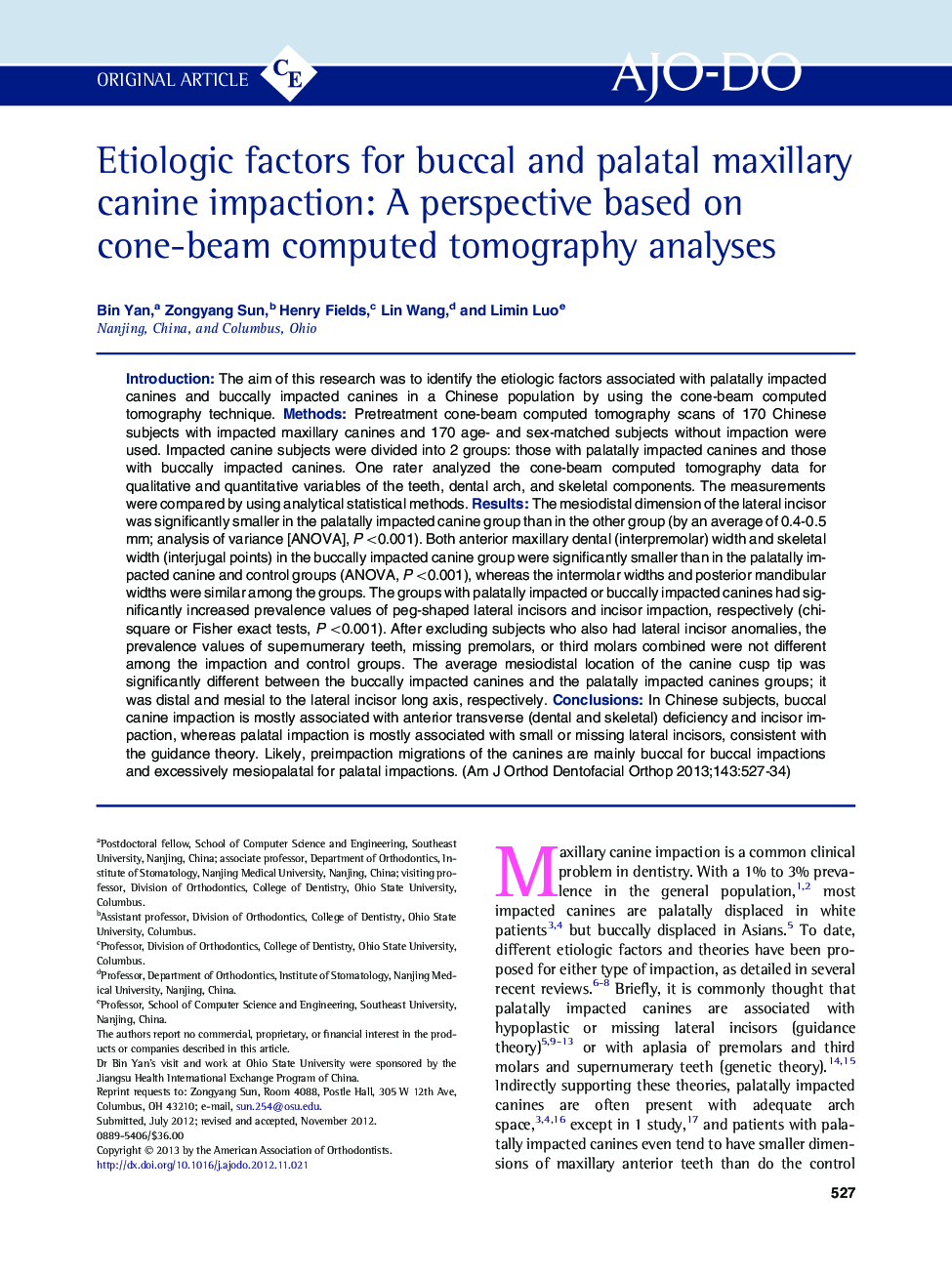| Article ID | Journal | Published Year | Pages | File Type |
|---|---|---|---|---|
| 3116384 | American Journal of Orthodontics and Dentofacial Orthopedics | 2013 | 8 Pages |
IntroductionThe aim of this research was to identify the etiologic factors associated with palatally impacted canines and buccally impacted canines in a Chinese population by using the cone-beam computed tomography technique.MethodsPretreatment cone-beam computed tomography scans of 170 Chinese subjects with impacted maxillary canines and 170 age- and sex-matched subjects without impaction were used. Impacted canine subjects were divided into 2 groups: those with palatally impacted canines and those with buccally impacted canines. One rater analyzed the cone-beam computed tomography data for qualitative and quantitative variables of the teeth, dental arch, and skeletal components. The measurements were compared by using analytical statistical methods.ResultsThe mesiodistal dimension of the lateral incisor was significantly smaller in the palatally impacted canine group than in the other group (by an average of 0.4-0.5 mm; analysis of variance [ANOVA], P <0.001). Both anterior maxillary dental (interpremolar) width and skeletal width (interjugal points) in the buccally impacted canine group were significantly smaller than in the palatally impacted canine and control groups (ANOVA, P <0.001), whereas the intermolar widths and posterior mandibular widths were similar among the groups. The groups with palatally impacted or buccally impacted canines had significantly increased prevalence values of peg-shaped lateral incisors and incisor impaction, respectively (chi-square or Fisher exact tests, P <0.001). After excluding subjects who also had lateral incisor anomalies, the prevalence values of supernumerary teeth, missing premolars, or third molars combined were not different among the impaction and control groups. The average mesiodistal location of the canine cusp tip was significantly different between the buccally impacted canines and the palatally impacted canines groups; it was distal and mesial to the lateral incisor long axis, respectively.ConclusionsIn Chinese subjects, buccal canine impaction is mostly associated with anterior transverse (dental and skeletal) deficiency and incisor impaction, whereas palatal impaction is mostly associated with small or missing lateral incisors, consistent with the guidance theory. Likely, preimpaction migrations of the canines are mainly buccal for buccal impactions and excessively mesiopalatal for palatal impactions.
